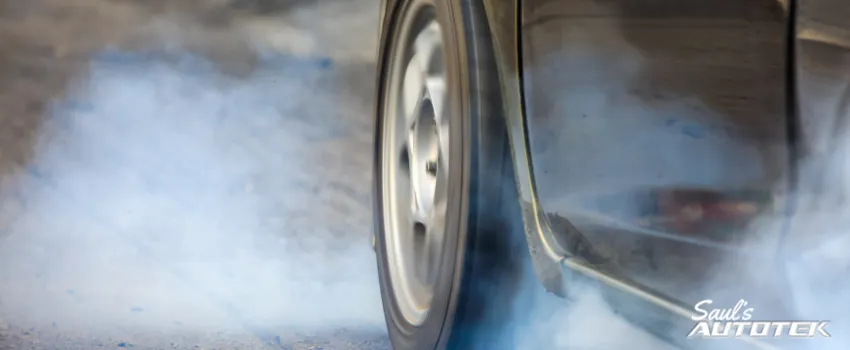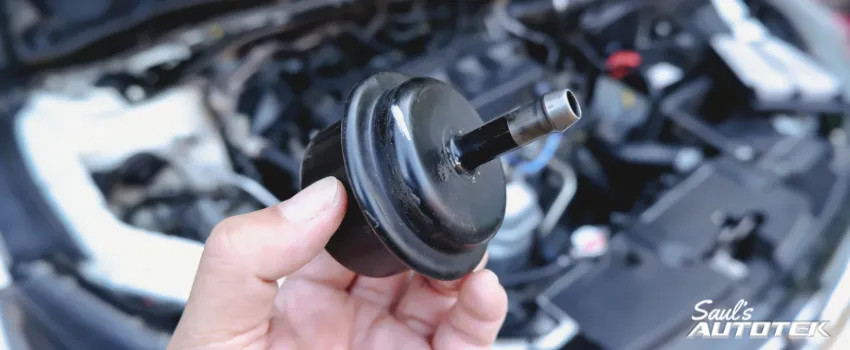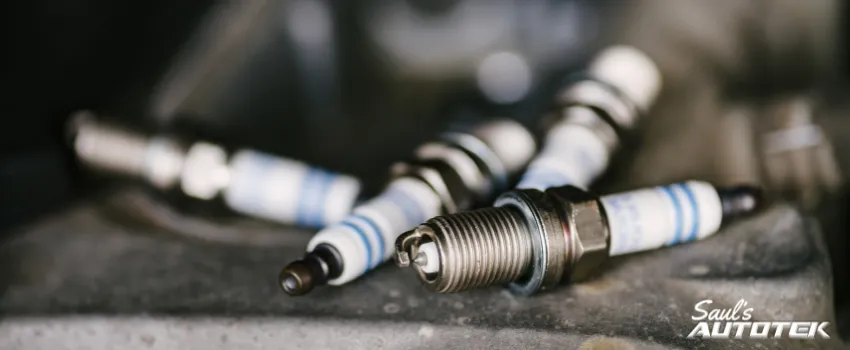Your car’s transmission system serves as the instrument through which power coming from the engine is transferred to the wheels. However, like any mechanical component, car transmissions are prone to various issues affecting their functionality and reliability.
Whether your vehicle is equipped with a manual, automatic, or continuously variable transmission (CVT), related problems can arise over time. These may range from minor inconveniences, such as gear shifting difficulties or clutch problems, to more severe malfunctions, like slipping gears or fluid leaks. Being aware of these common transmission problems and their causes should enable you to take proactive measures to address them promptly.
What Are the Different Types of Transmissions?
Generally, transmission systems are classified into three broad types. These include:
1. Manual Transmission
A manual transmission is where the driver has to change gears by using a gear shifter and a clutch pedal. It offers direct control over gear selection and is preferred by enthusiasts for its engagement and customization options. However, manual automotive transmissions require skillful coordination between the clutch, shifter, and accelerator pedals.
2. Automatic Transmission
An automatic transmission eliminates manual gear shifting since the appropriate gear ratios are automatically selected. It utilizes a hydraulic system, torque converter, and a complex arrangement of planetary gear sets to deliver smooth and effortless gear changes. The automatic version is quite popular for its convenience and ease of use among the different types of car transmissions.
3. Continuously Variable Transmission
Often referred to as CVT, the continuously variable transmission model uses a system of belts or chains and pulleys to provide an infinite range of gear ratios. This is different from the fixed gears found in the two other different types of transmissions. It allows seamless acceleration without distinct gear shifts, resulting in a smoother, more fuel-efficient driving experience.
How Different Types of Transmissions Work
The transmission system transfers power from the engine to the wheels, enabling your auto to move. It works by utilizing different gears and mechanisms to control the speed and torque generated by the engine.
The different types of transmissions will determine how your vehicle will move.
Regardless of your transmission type, though, the goal is to transmit engine power efficiently. When this is achieved, it will allow for seamless acceleration, optimal fuel economy, and smooth driving operation.
What Are the Different Types of Transmission Methods?
Listed below are three types of transmission methods:
1. Front-Wheel Drive (FWD)

The front-wheel drive is a transmission method where the engine’s power is primarily sent to the front wheels of the vehicle. This layout is commonly found in compact and midsize cars. FWD offers several advantages, including better traction in slippery conditions, improved fuel efficiency due to the lighter weight of the drivetrain, and increased interior space.
2. Rear-Wheel Drive (RWD)
The rear-wheel drive is the opposite of the FWD, meaning the engine’s power is directed to the rear wheels. RWD is commonly used in larger vehicles, sports cars, and luxury sedans. Its layout provides better weight distribution, which contributes to improved handling and balance and better acceleration and towing capabilities.
3. All-Wheel Drive (AWD)

The all-wheel drive transmission method is where engine power gets distributed to all four wheels of the vehicle. AWD systems can vary in design, but the common goal is providing better traction and stability in various road conditions.
Power is usually sent to the front or rear wheels when driving with an AWD. However, torque can be transferred to the wheels with better traction when a slip is detected.
Can You Fix a Transmission Without Replacing It?
In some cases, car transmissions can be fixed without replacing them entirely. The extent of the repair will depend on the specific issue or damage affecting the transmission system.
Minor problems such as a faulty sensor, solenoid, or electrical connection can often be repaired or replaced without a complete transmission replacement. Unfortunately, more significant issues like internal mechanical malfunctions may require a more extensive repair or a transmission rebuild.
What Maintenance Does a Transmission Need?
Proper maintenance is essential for ensuring the longevity and smooth operation of the different types of transmissions. This typically includes periodic fluid changes, inspection of fluid levels, and adherence to manufacturer-recommended service intervals.
In particular, the transmission fluid should be checked and replaced as needed. Old or contaminated fluid can lead to early wear of the various transmission components.
What Are the Types of Transmission Problems?
Even though there are different types of transmissions, they often encounter the following problems:
1. Gear Slippage
This occurs when the transmission unexpectedly shifts out of gear while you’re driving, causing a loss of power and acceleration. Worn clutch discs, damaged bands, or low transmission fluid levels can cause it.
2. Transmission Fluid Leaks
Leaks can happen due to damaged seals, gaskets, or loose connections. These should be addressed promptly to prevent further complications.
3. Overheating
Excessive heat can cause the transmission fluid to break down, leading to decreased lubrication and potential damage to the internal components. Overheating can result from towing heavy loads, driving in extreme conditions, or a malfunctioning cooling system.
4. Delayed Shifting
If the transmission experiences delayed engagement when changing gears or shifts abruptly and harshly, it may indicate problems. Examples of these problems include a faulty solenoid, worn clutch, or transmission control module faults.
5. Strange Noises
Unusual sounds like grinding, whining, clunking, and vibrations during gear changes can signal transmission issues. Worn gears, damaged bearings, or a malfunctioning torque converter may cause these.
6. Transmission Slipping
This occurs when the transmission fails to maintain consistent power delivery to the wheels, resulting in a loss of acceleration or erratic shifting. Slipping can be caused by worn clutch plates, a faulty torque converter, or low fluid levels.
7. Failure to Engage
When automotive transmissions fail to engage a gear while you’re driving, it can indicate problems with the synchronizer, linkage, or clutch. The specific symptoms and causes can vary depending on your car’s transmission type.
What Are the Top Five Signs of Transmission Problems?
The following are the five common problem signs of the different types of car transmissions:
1. Error Codes
Modern vehicles have onboard diagnostic systems that detect and display error codes related to transmission problems. These codes can indicate car issues like sensor malfunctions, solenoid failures, or abnormal transmission operation.
2. Fluid Leaks
If you notice red or brownish fluid under your auto, it may indicate a leak from the transmission. This is often a serious problem, so fluid leaks must be addressed promptly to prevent further transmission damage.
3. Strange Vibrations
Unusual vibrations when shifting gears or at specific speeds can also indicate transmission problems. These may feel like a shudder or a jerking motion and suggest a worn-out clutch plate, damaged torque converter, or misaligned gears.
4. Erratic Shifting
Problems with gear shifting may include delayed engagement or gears slipping in and out unexpectedly. A damaged synchronizer, low fluid levels, or a malfunctioning shift solenoid can cause erratic shifting.
5. Burning Smells
These should be cause for concern, especially if the smells come from the engine or transmission area. It may indicate an overheated transmission fluid resulting from low fluid levels or a malfunctioning cooling system.
Key Takeaway
With the different types of car transmissions playing crucial roles in your car’s performance, it should be evident that they should be seriously taken care of. If you encounter any problem signs, you must have your transmission system inspected and repaired by a qualified transmission specialist.
Take your driving to the next level with excellent transmission maintenance services from Saul’s Autotek.
Every car needs power to move, which is where the transmission plays a significant role. If it malfunctions, trust Saull’s Autotek to provide you with the solution.
Our transmission shop in Colorado is manned by certified car technicians who can ably help you with any transmission problem. Call us today.






